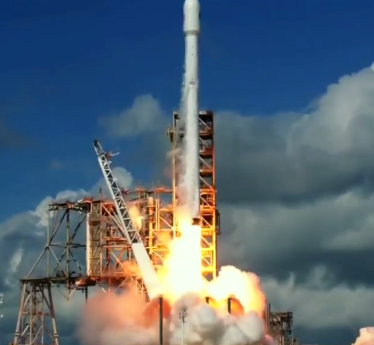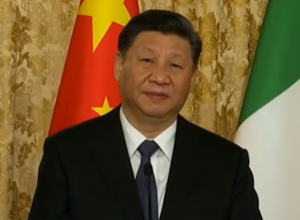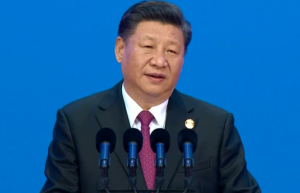
Global Times: The Long March-3B carrier rocket is ready for launching Chang’e-4 lunar probe to the Moon. Photo: Courtesy of China Aerospace Science and Technology Corp
What exactly is on the dark side of the Moon? Is it home to aliens? Is it made of cheese? China is about to let everyone know the answer by launching the world’s first lunar probe that will land and rove the far side of the Moon.
Chang’e-4 lunar probe, carried by Long March-3B carrier rocket, is scheduled to launch between 2:14 and 2:36 am Saturday from the Xichang satellite launch center in Southwest China’s Sichuan Province, the Xichang government said Friday.
The Chang’e-4 lunar lander and rover are expected to touch down in the Aitken Basin of the lunar south pole on the far side of the Moon, according to the Xinhua News Agency.
Chinese space experts said Chang’e-4’s landing will help humanity learn the origin and evolution of the Moon and improve the world’s observation of the universe.
“Compared to the near side, the far side of the Moon is filled with deep basins and high mountains and has never been touched by humans or machines,” Jiao Weixin, a space science professor at Peking University, told the Global Times on Friday.
Scientists will collect data from both the near and far sides of the Moon, which will greatly improve humanity’s understanding of the Moon. To date more than 100 satellites have been sent to explore the Moon, but none of them have landed on the far side, Jiao said.
As the far side of the Moon is shielded from electromagnetic interference from the Earth, it’s an ideal place to conduct low frequency radio astronomy observations, allowing for the study of a wide range of objects in space, a Beijing-based aerospace expert who requested anonymity, told the Global Times on Friday.
Jiao said a clean electromagnetic environment can help scientists study solar activities which could lead to improved service life of satellites.
The Chang’e-4 spacecraft is named after Chang’e, the Moon goddess in Chinese legends and myths. Chang’e missions are part of China’s lunar exploration project, which was initiated in 2004.
The project is China’s first step into deep-space exploration, according to the website of China National Space Administration (CNSA).
The project is divided into three phases – unmanned lunar exploration, manned moon landings and the establishment of a moon base. Lunar probes from Chang’e-1 to Chang’e-5 are the first phase.
China has successfully launched Chang’e-1 to Chang’e-3, which have orbited the Moon and made a soft landing on the near side of the Moon. Chang’e-5’s mission will be to collect soil samples on the Moon and return them to Earth.
Experts said that it’s not easy to make a soft landing on the dark side of the Moon.
One major problem is communication between the Earth and the far side of the Moon. China has solved the issue by launching a relay satellite in May that will transmit signals between controllers on Earth and the lunar lander on the far side of the Moon, Jiao said.
The far side’s steep topography and extremely low temperature at the lunar south pole required the probe to be equipped with strong obstacle avoidance capability and a temperature control system, he said.
The anonymous space expert said that Chang’e-4 has improved its batteries enabling it to operate on the Moon’s dark side.
The Chang’e-4 probe will carry a tin containing potato seeds and arabidopsis, a small plant related to cabbage and mustard, and probably some silkworm eggs to conduct the first biological experiment on the Moon, which experts said will help accumulate knowledge for building a lunar base and long-term residence on the Moon, Xinhua reported.
“The strong economy and technology, and steady and solid space program have benefited China, allowing us to conduct deep-space exploration and touch down on the far side of the Moon,” Jiao said.




